

We contemplate colonizing planets, but what about the stars themselves? Visit our sponsor, Brilliant: Containing virtually all the mass and resources of the solar system, the Sun, the Sun is the ultimate asset for a growing interplanetary civilization. While typically assumed too hot to touch and so out of our reach, we will challenge that notion today. Sign up to my weekly email newsletter: Support us at:Support us at: Follow us on Tumblr: More stories at Follow us on Twitter: @universetoday Like us on Facebook: Instagram - Team: Fraser Cain - @fcain / frasercain@gmail.com /Karla Thompson - @karlaii Chad Weber - Chloe Cain - Instagram: @chloegwen2001 Music: Left Spine Down - “X-Ray” Graphics Team: Edward Nardella Jeremy Jozwik Jarred Eagley Justin Dixon Jeremy Jozwik Katie Byrne Kris Holland/Mafic Studios: http://www.maficstudios.com Luuk Warringa Misho Yordanov Murat Mamkegh Nick Talmers Nieuwoudt Pierre Demet Sergio Botero Stefan Blandin Script Editing: Andy Popescu Connor Hogan Edward Nardella Eustratius Graham Gregory Leal Jefferson Eagley Keith Blockus Luca de Rosa Mark Warburton Michael Gusevsky Mitch Armstrong MolbOrg Naomi Kern Philip Baldock Sigmund Kopperud Steve Cardon Tiffany Penner Music: Markus Junnikkala, "Hail the Victorious Dead" Miguel Johnson, "So Many Stars" Chris Zabriskie, "I should have been more human" Miguel Johnson, "Exodus" Miguel Johnson, "A Planet Found" A.J. Prasad, "Aether"




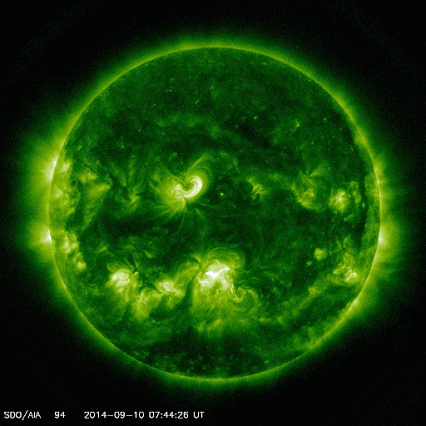
Sun Blasts an X-Class Flare at the Earth You know the drill, the Sun has blasted a major flare at us (two in fact).
That means it's time to head out, watch the skies, and hope to see a beautiful aurora display.

Our Sun is the source of life on Earth. Its calm glow across billions of years has allowed life to evolve and flourish on our world. This does not mean our Sun doesn’t have an active side. We have observed massive solar flares, such as the 1859 Carrington event, which produced northern lights as far south as the Caribbean, and drove electrical currents in telegraph lines. If such a flare occurred in Earth’s direction today, it would devastate our electrical infrastructure. But fortunately for us, the Sun is mostly calm. Unusually calm when compared to other stars.

An ice core from the West Antarctic Ice Sheet. Credit: Heidi Roop, NSF Longer studies have looked at isotopes of carbon and other elements in ice cores and tree rings. When the Sun is particularly active, high-energy protons can strike atoms in the upper atmosphere, converting them into radioactive isotopes. They can then become trapped in ice and wood. This gives us an idea of solar activity across nearly ten millennia.

Brightness variations of the Sun compared to the star KIC 7849521. Credit: MPS

The interior structure of the Sun. Credit: Wikipedia Commons/kelvinsong

Peering into the solar interior.
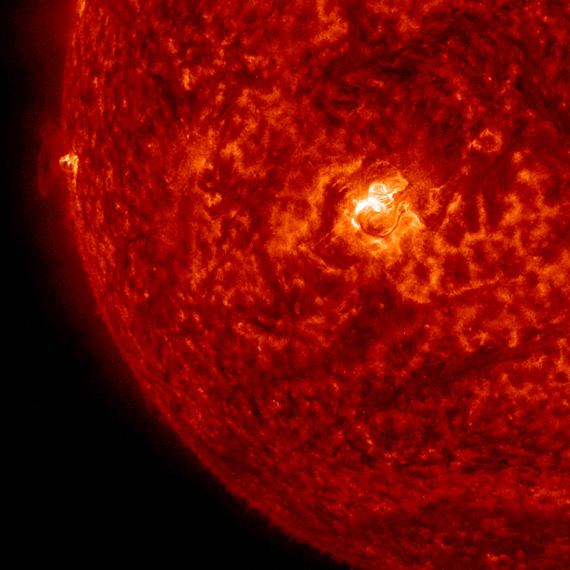
The sun emitting the solar flare, seen in 304 angstrom light.
The flare was directed toward Earth, Space.com reported, and that meant it caused a bit of trouble for earthlings.
According to NOAA's Space Weather Prediction Center, radiation released by the flare caused a radio blackout.
Solar flares occur when magnetic energy that has built up in the solar atmosphere is suddenly released.

The sun emitted a significant solar flare, peaking at 7:28 p.m. EST on Dec. 19, 2014.
NASA’s Solar Dynamics Observatory, which watches the sun constantly, captured an image of the event.
Solar flares are powerful bursts of radiation. Harmful radiation from a flare cannot pass through Earth's atmosphere
to physically affect humans on the ground, however -- when intense enough -- they can disturb the atmosphere
in the layer where GPS and communications signals travel. This flare is classified as an X1.8-class flare.
X-class denotes the most intense flares, while the number provides more information about its strength.
An X2 is twice as intense as an X1, an X3 is three times as intense, etc.
Published on May 1, 2015 Over a six-hour period on April 21, 2015, NASA's Solar Dyanmics Observatory (SDO) observed a wing-like prominence eruption. SDO views the sun in various wavelengths of the extreme ultravoilet, including 171 (shown in gold) and 304 (shown in orange) angstroms. : "This video is public domain and can be downloaded Or find NASA Goddard Space Flight Center on Facebook: Or find us on Twitter: Category Science & Technology

A giant, swirling plume of superheated plasma churned above the surface of the sun for 40 hours last week
while a NASA spacecraft looked on.
NASA's sun-studying Solar Dynamics Observatory (SDO) captured dramatic time-lapse video of the solar tornado,
which raged from Sept. 1 through Sept. 3.(2015)
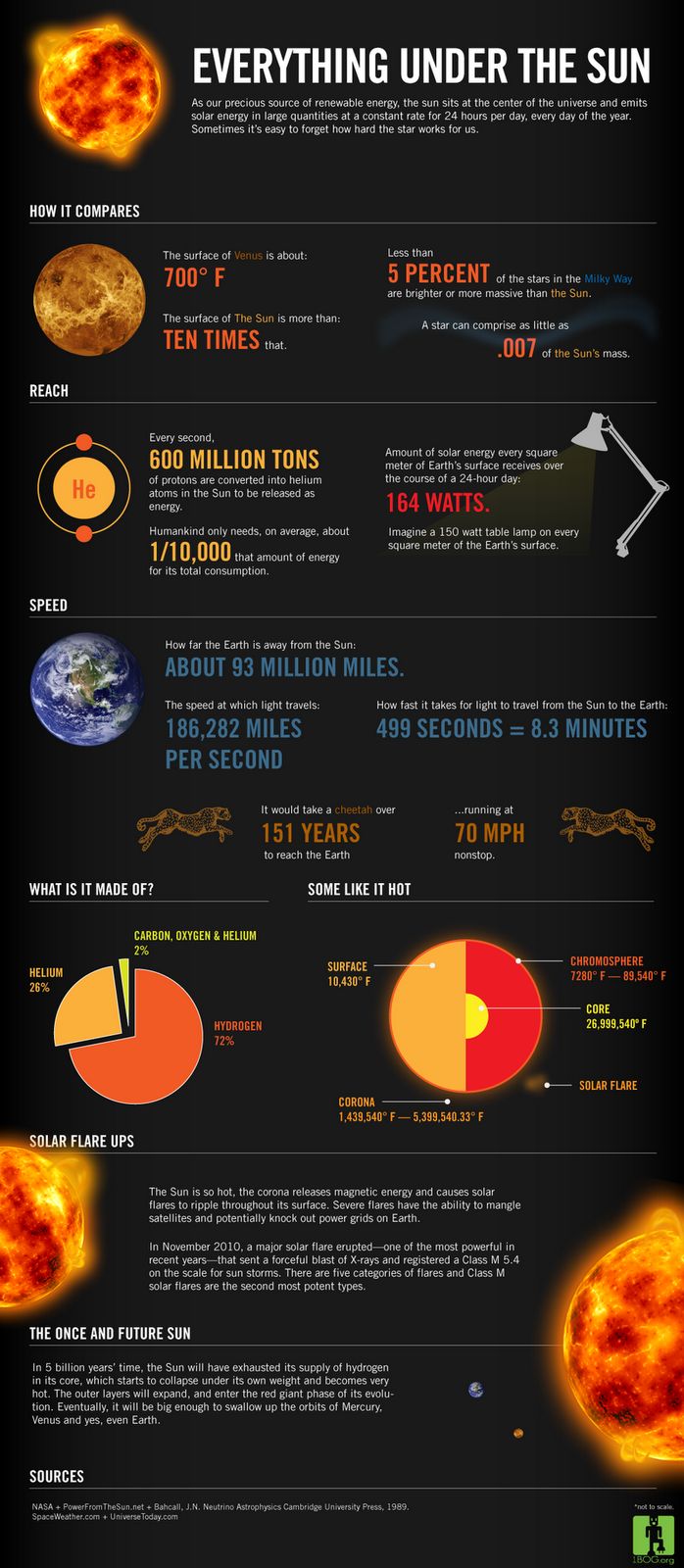


Artist’s concept of the DSCOVR satellite, which will provide real-time solar wind monitoring to the National Weather Service. Credit: NOAA
Solar wind – that is, the stream of charged electrons and protons that are released from the upper atmosphere of the Sun –
is a constant in our Solar System and generally not a concern for us Earthlings. However, on occasion a solar wind shock wave or
Coronal Mass Ejection can occur, disrupting satellites, electronics systems, and even sending harmful radiation to the surface.

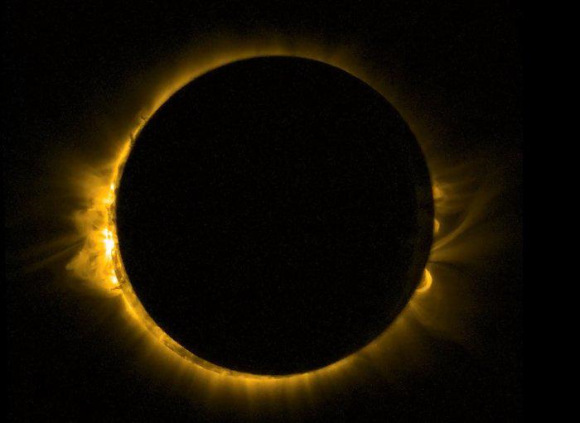
The view of today’s eclipse (03-20-2015)from low Earth orbit. Credit: ESA/Proba-2.
There’s an old Robert Heinlein saying that goes “climate is what you expect, weather is what you get,”
And the weather certainly kept folks guessing right up until the start of today’s eclipse. And though much of the
UK and tracks along the Faroe Islands were clouded out, folks who made the trek up to Svalbard were treated to a fine view of totality,
while observers across Europe caught stages of the eclipse through its partial phases.
Many more managed to capture glimpses of the eclipse thanks to our good friends over at Slooh and the Virtual Telescope project.
What’s better than a full 180-degree digital theater experience that takes you into the heart of our Sun
to see how solar storms form? Why, all of that accompanied by a rumbling narration by Benedict Cumberbatch, of course.

Flaring, active regions of our sun are highlighted in this new image combining observations from several telescopes.
High-energy X-rays from NASA's Nuclear Spectroscopic Telescope Array (NuSTAR) are shown in blue; low-energy X-rays from Japan's Hinode
spacecraft are green; and extreme ultraviolet light from NASA's Solar Dynamics Observatory (SDO) is yellow and red. All three telescopes captured their solar images around the same time on April 29, 2015. The NuSTAR image is a mosaic
made from combining smaller images. The active regions across the sun’s surface contain material heated to several millions of degrees.
The blue-white areas showing the NuSTAR data pinpoint the most energetic spots. During the observations, microflares went off,
which are smaller versions of the larger flares that also erupt from the sun's surface. The microflares rapidly release energy and heat
the material in the active regions.
NuSTAR typically stares deeper into the cosmos to observe X-rays from supernovas, black holes and other extreme objects.
But it can also look safely at the sun and capture images of its high-energy X-rays with more sensitivity than before.
Scientists plan to continue to study the sun with NuSTAR to learn more about microflares, as well as hypothesized nanoflares,
which are even smaller.
In this image, the NuSTAR data shows X-rays with energies between 2 and 6 kiloelectron volts; the Hinode data, which is from the X-ray Telescope
instrument, has energies of 0.2 to 2.4 kiloelectron volts; and the Solar Dynamics Observatory data, taken using the Atmospheric
Imaging Assembly instrument, shows extreme ultraviolet light with wavelengths of 171 and 193 Angstroms.
Note the green Hinode image frame edge does not extend as far as the SDO ultraviolet image, resulting in the green portion
of the image being truncated on the right and left sides.
Image credit: NASA/JPL-Caltech/GSFC/JAXA Last Updated: July 30, 2015 Editor: Tony Greicius

The sun keeps the planets in its orbit with a tremendous gravitational force. What would happen if it disappeared entirely? Learn about the star at the center of our solar system, and how it is critical to all life as we know it. : ? Subscribe About National Geographic: National Geographic is the world's premium destination for science, exploration, and adventure. Through their world-class scientists, photographers, journalists, and filmmakers, Nat Geo gets you closer to the stories that matter and past the edge of what's possible. Get More National Geographic: Official Site: Facebook: Twitter: Instagram: Sun 101 | National Geographic National Geographic
NASA's Solar Dynamics Observatory acquired 200 million+ images in its past 1,826 days looking at the Sun. Goddard Space Flight Center pulled together these highlights for pure visual enjoyment in addition to cool science. Full Story:
Phil takes us for a closer (eye safe!) look at the two-octillion ton star that rules our solar system. We look at the sun's core, plasma, magnetic fields, sunspots, solar flares, coronal mass ejections, and what all of that means for our planet. This episode is sponsored by Squarespace:

Solar cycle #23 as seen via SOHO, and an artist’s conception of the observatory in space.
All images credit of NASA/ESA/SOHO
Published on Dec 1, 2015 Dr. Joe Gurman of NASA's Goddard Space Flight Center provides commentary on selected shots from SOHO's 20 years in space.
After 20 years in space, ESA and NASA’s Solar and Heliospheric Observatory, or SOHO, is still going strong. Originally launched in 1995
to study the sun and its influence out to the very edges of the solar system, SOHO revolutionized this field of science, known as heliophysics,
providing the basis for nearly 5,000 scientific papers. SOHO also found an unexpected role as the greatest comet hunter of all
time—reaching 3,000 comet discoveries in September 2015.
When SOHO was launched on Dec. 2, 1995, the field of heliophysics looked very different than it does today.
Questions about the interior of the sun, the origin of the constant outflow of material from the sun known as the solar wind,
and the mysterious heating of the solar atmosphere were still unanswered. Twenty years later, not only do we have a much better
idea about what powers the sun, but our entire understanding of how the sun behaves has changed.
This video is public domain and can be downloaded Like our videos? Subscribe to NASA's Goddard Shorts HD podcast: Or find NASA Goddard Space Flight Center on Facebook Or find us on Twitter Category Science & Technology License Standard YouTube License
Uploaded on Dec 2, 2011 Happy 16th SOHO! Launched December 2, 1995, SOHO has been giving us a 24/7 eye on the Sun for about 1 1/2 solar activity cycles.
It has allowed us to see the Sun as it has never been seen before. Though some of the instruments have now been replaced by SDO many
of its 12 instruments are still in operation, especially the LASCO C2 and C3 coronagraphs which are still vital in our daily monitoring of the Sun. Credit: NASA / ESA SOHO Category Science & Technology License Standard YouTube License
Published on May 14, 2013 This is a collection of images taken by the instruments on-board the Solar and Heliospheric Observatory' (SOHO)
of solar flare associated with the Halloween Storm of 2003. It starts with is a zoomed in view of the flare then shifts
to a full solar disk view. This is followed by the LASCO C2 coronograph view and then the LASCO C3 coronograph view.
The coronographic view end when the CCD sensors are overwhelm by the ejected solar particles.
This is the largest solar flare of the space age to date.
Category Science & Technology License Standard YouTube License

A massive sunspot witnessed by SOHO in 2000, compared to the Earth.

A ‘neat’ image… Comet NEAT photobombs the view of SOHO’s LASCO C3 camera.
Published on Feb 12, 2016 The sun is always changing and NASA's Solar Dynamics Observatory is always watching. Launched on Feb. 11, 2010,
SDO keeps a 24-hour eye on the entire disk of the sun, with a prime view of the graceful dance of solar material
coursing through the sun's atmosphere, the corona. SDO's sixth year in orbit was no exception.
This video shows that entire sixth year -- from Jan. 1, 2015, to Jan. 28, 2016, as one time-lapse sequence.
At full quality on YouTube, this video is ultra-high definition 3840x2160 and 29.97 frames per second. Each frame represents 2 hours.
A downloadable version has a frame rate of 59.94 with each frame representing 1 hour. See below for the link.
SDO's Atmospheric Imaging Assembly (AIA) captures a shot of the sun every 12 seconds in 10 different wavelengths.
The images shown here are based on a wavelength of 171 angstroms, which is in the extreme ultraviolet range and
shows solar material at around 600,000 kelvins (about 1,079,540 degrees F). In this wavelength it is easy to see the sun's 25-day rotation.
During the course of the video, the sun subtly increases and decreases in apparent size. This is because the distance between the
SDO spacecraft and the sun varies over time. The image is, however, remarkably consistent and stable despite the fact that SDO
orbits Earth at 6,876 mph, and Earth orbits the sun at 67,062 mph.
Scientists study these images to better understand the complex electromagnetic system causing the constant movement on the sun,
which can ultimately have an effect closer to Earth, too: Flares and another type of solar explosion called coronal mass ejections
can sometimes disrupt technology in space. Moreover, studying our closest star is one way of learning about other stars in the galaxy.
NASA's Goddard Space Flight Center in Greenbelt, Maryland, built, operates and manages the SDO spacecraft for NASA's Science
Mission Directorate in Washington, D.C. Credit: NASA's Goddard Space Flight Center/Wiessinger Music: "Tides," a track available from Killer Tracks Learn more about SDO and see more imagery: http://www.nasa.gov/sdo and http://sdo.gsfc.nasa.gov/ This video is public domain. It can be downloaded at its full quality and frame rate at: https://svs.gsfc.nasa.gov/cgi-bin/det... Category Science & Technology License Standard YouTube License

During a December 2013 solar flare, three NASA missions observed a current sheet form – a strong clue for explaining what initiates the flares.
This animation shows four views of the flare from NASA’s Solar Dynamics Observatory, NASA’s Solar and Terrestrial Relations Observatory,
and JAXA/NASA’s Hinode, allowing scientists to make unprecedented measurements of its characteristics.
The current sheet is a long, thin structure, especially visible in the views on the left.
Those two animations depict light emitted by material with higher temperatures, so they better show the extremely hot current sheet.
Credits: NASA/JAXA/SDO/STEREO/Hinode (courtesy Zhu, et al.) These eruptions on the sun eject radiation in all directions.

NASA's Solar Dynamics Observatory captured this imagery of a solar flare – as seen in the bright flash –
around 8:30 p.m. EDT on April 17, 2016. A loop of solar material can also be seen rising up off the right limb of the sun.
Credits: NASA/SDO/Goddard


Image: Payload accommodation onboard Solar Orbiter. In this rendering, one side wall has been removed to expose the remote-sensing instruments mounted on the payload panel. The SPICE [Spectral Imaging of the Coronal Environment} instrument (not visible) is mounted to the top panel from below. Credit: ESA. What Solar Orbiter brings to the mix is an orbit that will allow us to get close-up views of the Sun’s polar regions, with images from latitudes higher than 25 degrees. We should be able to see solar storms building up over an extended period from the same vantage point, because when traveling at the highest velocity along its orbit, Solar Orbiter will come close to matching the speed of the Sun’s rotation on its axis. We will be able to track solar storms for days. Remember that many of the Sun’s jets originate in the areas around the poles, meaning we need more data about the magnetic field and plasma flows there to delve more fully into the process. These are not regions that are visible to us from Earth.

ESA's Solar Orbiter will capture the very first images of the Sun’s polar regions, where magnetic tension builds up and releases in a lively dance. Credits: Spacecraft: ESA/ATG medialab; Sun: NASA/SDO/P. Testa (CfA)
Published on Jun 13, 2017 NASA is planning a mission to get as close as possible as we can to the Sun and reveal its mysteries. Support us at: More stories at: Follow us on Twitter: @universetoday Like us on Facebook: Google+ - Instagram - Team: Fraser Cain - @fcain / frasercain@gmail.com Karla Thompson - @karlaii Chad Weber - weber.chad@gmail.com If you’ve watched enough of our videos, you know I’ve got an uneasy alliance with the Sun. Sure, it provides the energy we need for all life on Earth. But, it’s a great big ongoing thermonuclear reaction, and it’s right there! As soon as we get fusion, Sun, in like, 30 years or so, I tell you, we’ll be the ones laughing.

Parker Solar Probe’s trajectory including Venus flybys. Credit: NASA/JHUAPL

The Parker Solar Probe’s WISPR (Wide-field Imager for Solar Probe) instrument captured this image of a coronal streamer on Nov. 8th, 2018. Coronal streamers are structures of solar material within the Sun’s atmosphere, the corona, that usually overlie regions of increased solar activity. The fine structure of the streamer is very clear, with at least two rays visible. The bright object near the center of the image is Mercury, and the dark spots are a result of background correction. Credits: NASA/Naval Research Laboratory/Parker Solar Probe
NASA's Parker Solar Probe has sent back a remarkable image.
My Official Website: DONATE TO ME DIRECTLY-PayPal (Safe & secure one time user friendly method) PayPal Thank you for watching! Please LIKE & SHARE ?? **Don’t forget to click the subscribe button to my channel for updates** NEW VISITORS CAN SUBSCRIBE TO MY CHANNEL CLICK LINK BELOW YouTube: (Subscribe for daily updates and live streams ) NEW~ MrMBB333 Merchandise Follow me on these social platforms: * Like Me On Facebook: :* Follow Me On Twitter * Google+: * Follow Me On Instagram: SEND ME A EMAIL: ~Want to share something with me? Please send me an email at #MrMBB333 CHANNEL POLICY: Inappropriate content or language will be removed from comments at the discretion of the moderators. Any users that abuse this policy will be blocked.

Coronal holes are regions in the sun’s atmosphere or corona where solar plasma can stream directly into space. Often a hole will a couple rotations, inciting repeat auroras approximately every 4 weeks. Credit: NASA

Parker Solar Probe’s instruments. Credit: NASA/JHUAPL

The Parker Solar Probe orbiting the Sun.(Artist conception) Credit: NASA/JHUAPL

NASA’s Parker Solar Probe will launch this summer(2018) and study both the solar wind and unanswered questions about the Sun’s sizzling corona. Credit:

The Parker Solar Probe will use seven Venus flybys over nearly seven years to gradually shrink its orbit around the Sun, coming as close as 3.7 million miles (5.9 million km), well within the orbit of Mercury. Closest approaches (called perihelia) will happen in late December 2024 and the first half of 2025 before the mission ends. Credit:

During the probe’s closest approach, the Sun’s apparent diameter will span 14° of sky. Compare that to the ½° Sun we see from Earth. Can you imagine how hot the Sun’s rays would be if it were this large from Earth? Life as we know it would be over. Credit: Wikipedia / CC BY-SA 3.0
NASA’s Parker Solar Probe will be the first-ever mission to "touch" the sun. The spacecraft, about the size of a small car, will travel directly into the sun's atmosphere about 4 million miles from our star's surface. Launch is slated for summer 2018. Credit: The Johns Hopkins University Applied Physics Laboratory This video is public domain. Learn more about the Parker Solar Probe: This video is public domain and along with other supporting visualizations can be downloaded from the Scientific Visualization Studio at: If you liked this video, subscribe to the NASA Goddard YouTube channel: Or subscribe to NASA’s Goddard Shorts HD Podcast: Follow NASA’s Goddard Space Flight Center · Facebook: · Twitter · Flickr · Instagram · Google+ Category Science & Technology License Standard YouTube License

Illustration of the Parker Solar Probe spacecraft approaching the Sun. Credits: Johns Hopkins University Applied Physics Laboratory

Artist’s impression of a solar flare erupting from the Sun’s surface. Credit: NASA Goddard Space Flight Center
Solar Probe Plus will move in a highly elliptical orbit, using seven gravity assists from Venus to move it closer to the Sun with each pass. Solar Orbiter will use Earth and Venus gravity assists to move into a relatively circular orbit and climb up and out of the ecliptic plane to capture the first images of the Sun’s poles. Credit: NASA’s Goddard Space Flight Center’s Scientific Visualization Studio Visualization Credits Tom Bridgman (GST): Lead Animator Scott Wiessinger (USRA): Producer This video is public domain and may be downloaded at: Category Science & Technology
Need to Catch Up? COSMIC DISASTER: CLIMATE FORCING: CLIMATE FORCING [Short]: PLASMA COSMOLOGY: PLASMA COSMOLOGY [Short]: Lots more on our channel page, just click our name! Our Websites: Suspicious Observers Space Weather News Quake Watch Observatory Project Magnetic Reversal
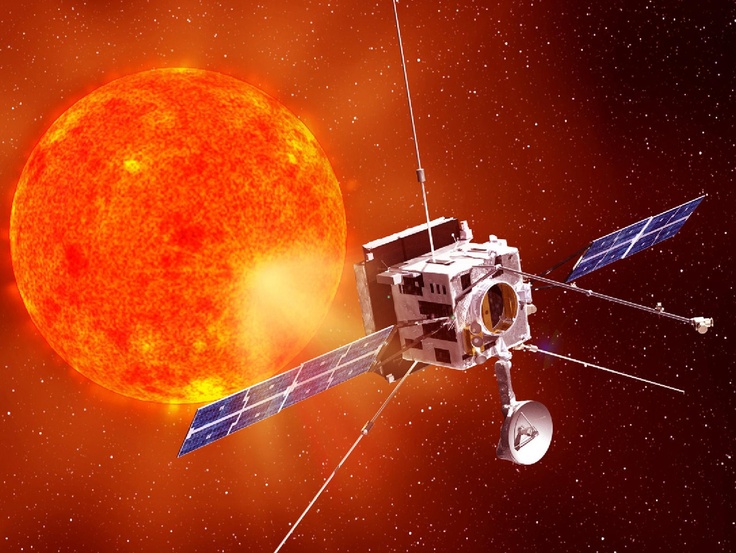
Bella Browny • 8 hours ago European Space Agency plans to launch a solar orbiter in 2017 that will
come as close as 26 million miles to the sun. #space #sun

In the coming years, a number of will be sent to space for the purpose of answering some of the enduring questions about the cosmos. One of the most pressing is the effect that solar activity and “space weather” events have on planet Earth. By being able to better-predict these, scientists will be able to create better early-warning systems that could prevent damage to Earth’s electrical infrastructure.
ESA’s new Sun-exploring mission Solar Orbiter lofted to space aboard the US Atlas V 411 rocket from NASA’s spaceport in Cape Canaveral, Florida at 04:03 GMT (05:03 CET) on 10 February 2020. Solar Orbiter, an ESA-led mission with strong NASA participation, carries a set of ten instruments for imaging the surface of the Sun and studying the environment in its vicinity. The spacecraft will travel around the Sun on an elliptical orbit that will take it as close as 42 million km away from the Sun’s surface, about a quarter of the distance between the Sun and Earth. The orbit will allow Solar Orbiter to see some of the never-before-imaged regions of the Sun, including the poles, and shed new light on what gives rise to solar wind, which can affect infrastructure on Earth. More about Solar Orbiter: https://www.esa.int/solarorbiter"> ? Subscribe: http://bit.ly/ESAsubscribe"> and click twice on the bell button to receive our notifications. ? Subscribe:and click twice on the bell button to receive our notifications. Check out our full video catalog: Follow us on Twitter: On Facebook: On Instagram: On Flickr: We are Europe's gateway to space. Our mission is to shape the development of Europe's space capability and ensure that investment in space continues to deliver benefits to the citizens of Europe and the world. Check out to get up to speed on everything space related. Copyright information about our videos is available here:
This includes the Heliospheric Imager (SoloHi), Spectral Imaging of the Coronal Environment (SPICE), and the Polarithmic and Helioseismic Imager (PHI), which will image the Sun’s surface and corona. Meanwhile, instruments like the Energetic Particle Detector (EPD), Solar Wind plasma Analyser (SWA), X-ray Spectrometer/Telescope (STIX), and Extreme Ultraviolet Imager (EUI) will measure solar wind and the Sun’s magnetic field

The Solar Orbiter lifting off from Cape Canaveral. Credit: ESA–S. Corvaja

Artist’s impression of the Solar Orbiter facing the Sun. Credit: ESA/ATG medialab/NASA/SDO/P. Testa (CfA)